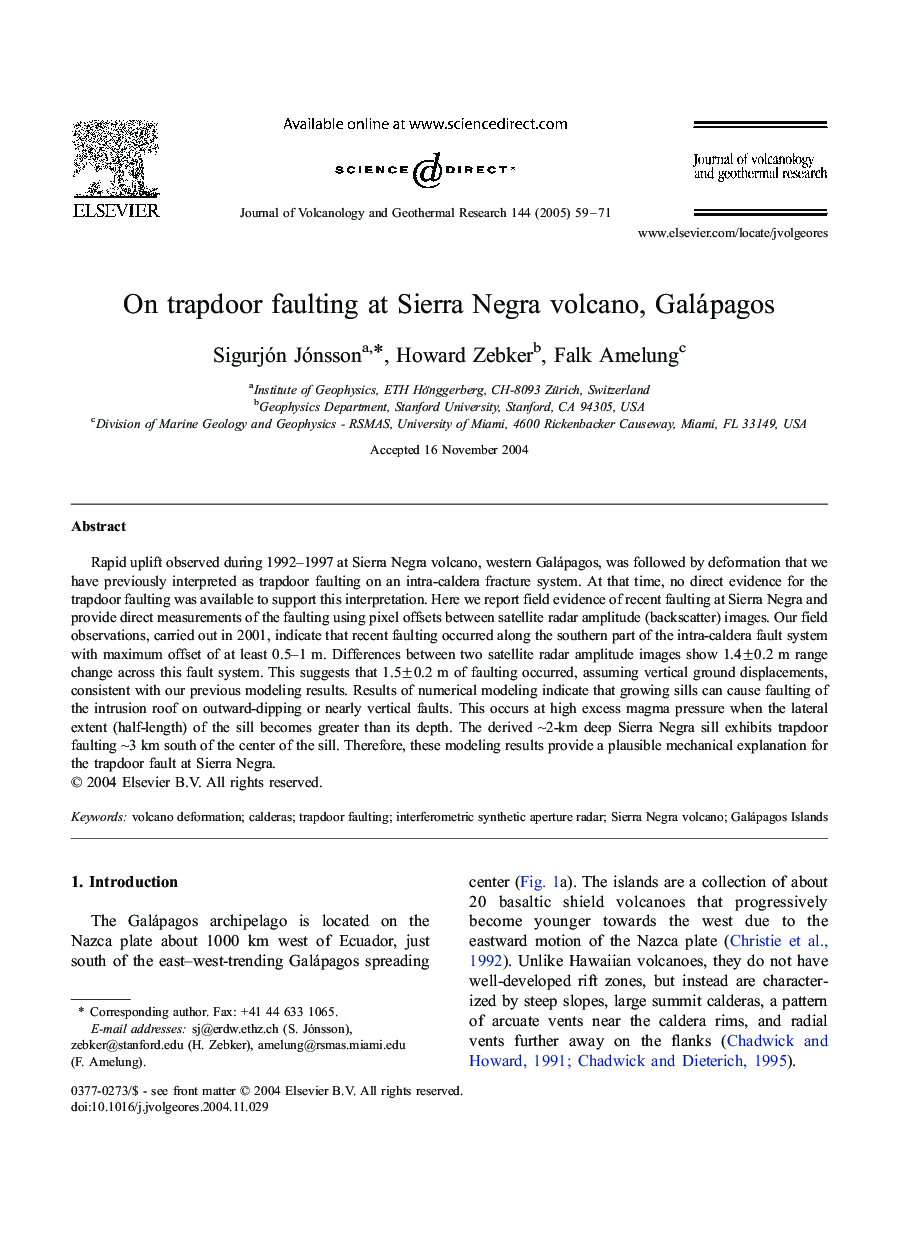| Article ID | Journal | Published Year | Pages | File Type |
|---|---|---|---|---|
| 9531118 | Journal of Volcanology and Geothermal Research | 2005 | 13 Pages |
Abstract
Rapid uplift observed during 1992-1997 at Sierra Negra volcano, western Galápagos, was followed by deformation that we have previously interpreted as trapdoor faulting on an intra-caldera fracture system. At that time, no direct evidence for the trapdoor faulting was available to support this interpretation. Here we report field evidence of recent faulting at Sierra Negra and provide direct measurements of the faulting using pixel offsets between satellite radar amplitude (backscatter) images. Our field observations, carried out in 2001, indicate that recent faulting occurred along the southern part of the intra-caldera fault system with maximum offset of at least 0.5-1 m. Differences between two satellite radar amplitude images show 1.4±0.2 m range change across this fault system. This suggests that 1.5±0.2 m of faulting occurred, assuming vertical ground displacements, consistent with our previous modeling results. Results of numerical modeling indicate that growing sills can cause faulting of the intrusion roof on outward-dipping or nearly vertical faults. This occurs at high excess magma pressure when the lateral extent (half-length) of the sill becomes greater than its depth. The derived â¼2-km deep Sierra Negra sill exhibits trapdoor faulting â¼3 km south of the center of the sill. Therefore, these modeling results provide a plausible mechanical explanation for the trapdoor fault at Sierra Negra.
Related Topics
Physical Sciences and Engineering
Earth and Planetary Sciences
Geochemistry and Petrology
Authors
Sigurjón Jónsson, Howard Zebker, Falk Amelung,
